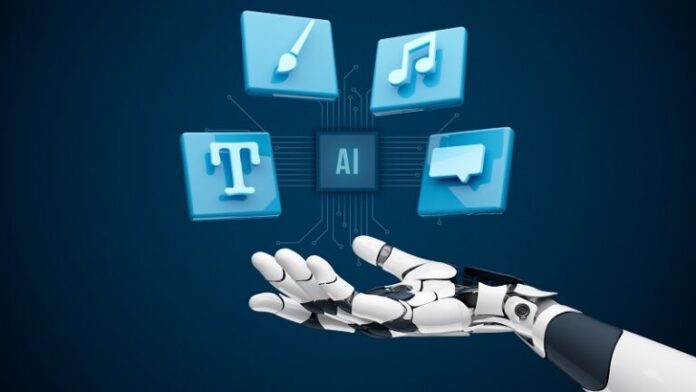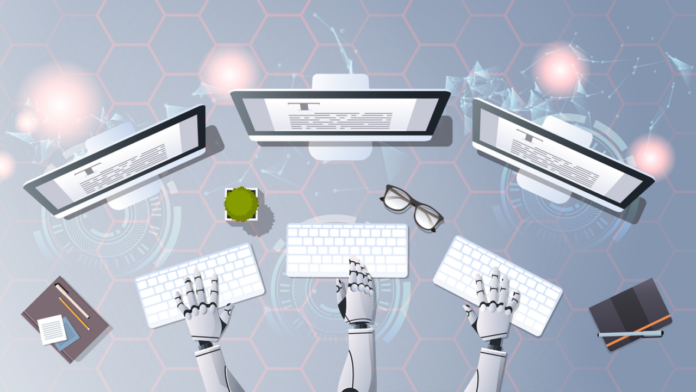As AI-generated content becomes more prevalent, distinguishing it from human-written content has become crucial.
The reasons depend on the situation. A good example is related to writers. Clients may want to make sure that writers are actually writing the content without any assistance. Most of them will use chatgpt detector. Using the same one means that you can avoid complications.
This article delves into the reasons why AI-written content is easier to spot than one might assume, highlighting key characteristics and offering practical tips for detection.
Understanding AI-Generated Content

AI-written content is produced using algorithms and machine learning models. These models analyze vast amounts of data to generate text that mimics human writing. While AI can produce coherent and contextually relevant content, it often lacks the nuances and creativity of human writers. This discrepancy forms the basis for identifying AI-generated content.
Repetition and Redundancy
One of the most noticeable traits of AI-written content is repetition. AI models, despite their sophistication, tend to repeat certain phrases and ideas. This is due to the way these models are trained, often resulting in redundant sentences. Human writers, on the other hand, strive for variety and coherence, making their content more engaging and less repetitive.
Example
An AI-generated article might repeat key phrases such as “AI technology is advancing” multiple times, while a human writer would rephrase this idea in different ways, enhancing readability and maintaining the reader’s interest.
Lack of Emotional Depth

AI lacks genuine emotions, which is reflected in the content it generates. Human writers infuse their work with emotions, opinions, and personal experiences, making their content relatable and engaging. AI-generated content often feels flat and impersonal, missing the subtle emotional cues that resonate with readers.
Example
A human writer discussing a touching story about a personal experience would convey emotions through descriptive language and personal insights. AI, however, would provide a more factual and detached narrative, lacking the emotional depth that makes the story compelling.
Predictable Sentence Structures
AI models follow specific patterns and structures, leading to predictability in sentence construction. This predictability makes it easier to spot AI-written content, as human writing tends to be more varied and less formulaic. Human writers employ a range of sentence structures, from short, impactful sentences to longer, complex ones, adding rhythm and flow to their writing.
Example
AI-generated content might produce a series of sentences with a similar structure, such as “AI is useful. AI is advancing. AI is everywhere.” In contrast, a human writer would mix short and long sentences, creating a more dynamic and engaging narrative.
Limited Creativity and Innovation

AI models rely on existing data to generate content, limiting their ability to create truly original and innovative ideas. Human writers, with their unique perspectives and creativity, can produce content that goes beyond the conventional. This creativity is often missing in AI-generated content, making it easier to spot.
Example
A human writer might draw connections between seemingly unrelated topics, offering fresh insights and perspectives. AI-generated content, constrained by its data sources, would struggle to achieve this level of creativity.
Identifiable Patterns and Phrases
AI-generated content often contains specific patterns and phrases that are characteristic of machine learning models. These patterns can include unnatural word choices, awkward phrasing, and a lack of contextual awareness. By recognizing these patterns, readers can identify AI-written content more easily.
Example
An AI-generated article might use phrases that feel out of place or overly formal, such as “in the realm of technological advancements,” whereas a human writer would use more natural and conversational language.
Overuse of Clichés and Generalizations

AI tends to rely on clichés and generalizations, as these are common in the data it processes. Human writers, on the other hand, strive to avoid clichés and provide specific, detailed information. The overuse of clichés and broad statements is a clear indicator of AI-written content.
Example
AI-generated content might use clichés like “a double-edged sword” or “only time will tell” frequently, while human writers aim to provide more original and specific expressions.
Lack of Personal Touch
Human writers often include a personal touch in their content, sharing anecdotes, opinions, and unique insights. This personal touch is difficult for AI to replicate, making it a key factor in distinguishing human-written content from AI-generated text.
Example
A human writer discussing a travel experience might include personal anecdotes and reflections, adding depth and personality to the content. AI, however, would provide a more generic and impersonal account.
Contextual Inconsistencies
AI models sometimes struggle with maintaining contextual consistency throughout an article. They may introduce facts or statements that are out of context or irrelevant. Human writers, with their understanding of the subject matter, ensure that their content remains contextually accurate and relevant.
Example
In an article about climate change, AI might include unrelated information about historical weather patterns without proper context, while a human writer would ensure that all content is directly related to the topic.
Limited Adaptability

AI models are limited by their training data and cannot easily adapt to new or emerging trends and topics. Human writers, with their ability to research and understand new information, can produce content that is current and relevant. This adaptability is often missing in AI-generated content.
Example
In a piece about the latest technological advancements, a human writer would incorporate the most recent developments and trends, while AI might rely on outdated information, making the content less relevant.
Conclusion
While AI-generated content is becoming more sophisticated, it still exhibits certain characteristics that make it easier to spot compared to human-written content. Repetition, lack of emotional depth, predictable sentence structures, limited creativity, identifiable patterns, overuse of clichés, lack of personal touch, contextual inconsistencies, and limited adaptability are key indicators.
By being aware of these traits, readers can better identify AI-written content and appreciate the unique value that human writers bring to the table.
The future of content creation will likely involve a blend of AI and human efforts, leveraging the strengths of both to produce high-quality and engaging content. However, recognizing the distinctive features of AI-generated content remains crucial in ensuring the authenticity and reliability of information.









